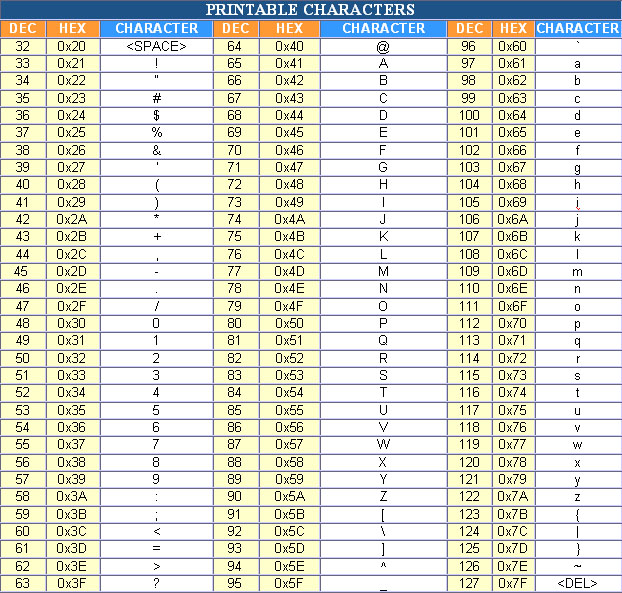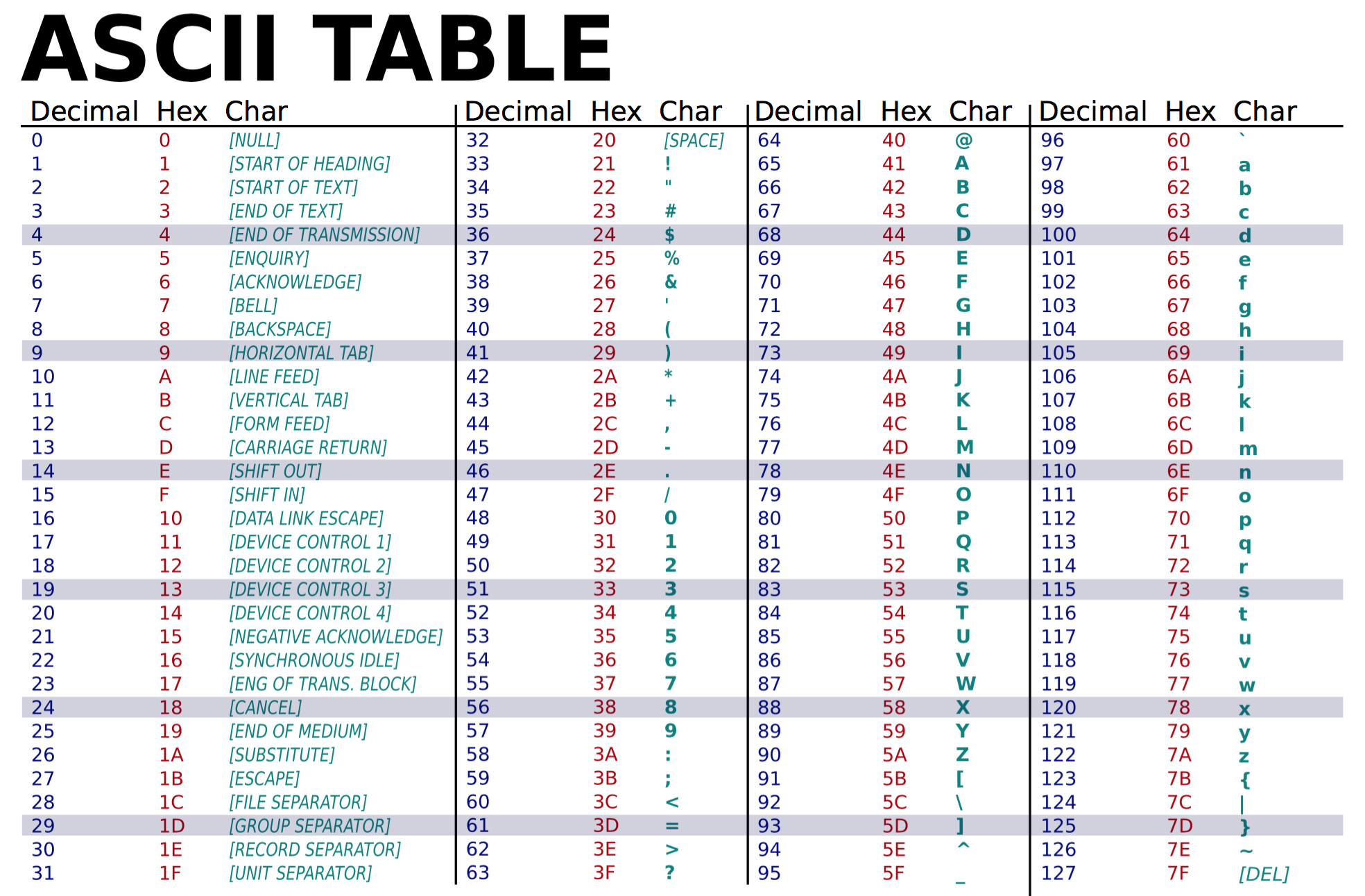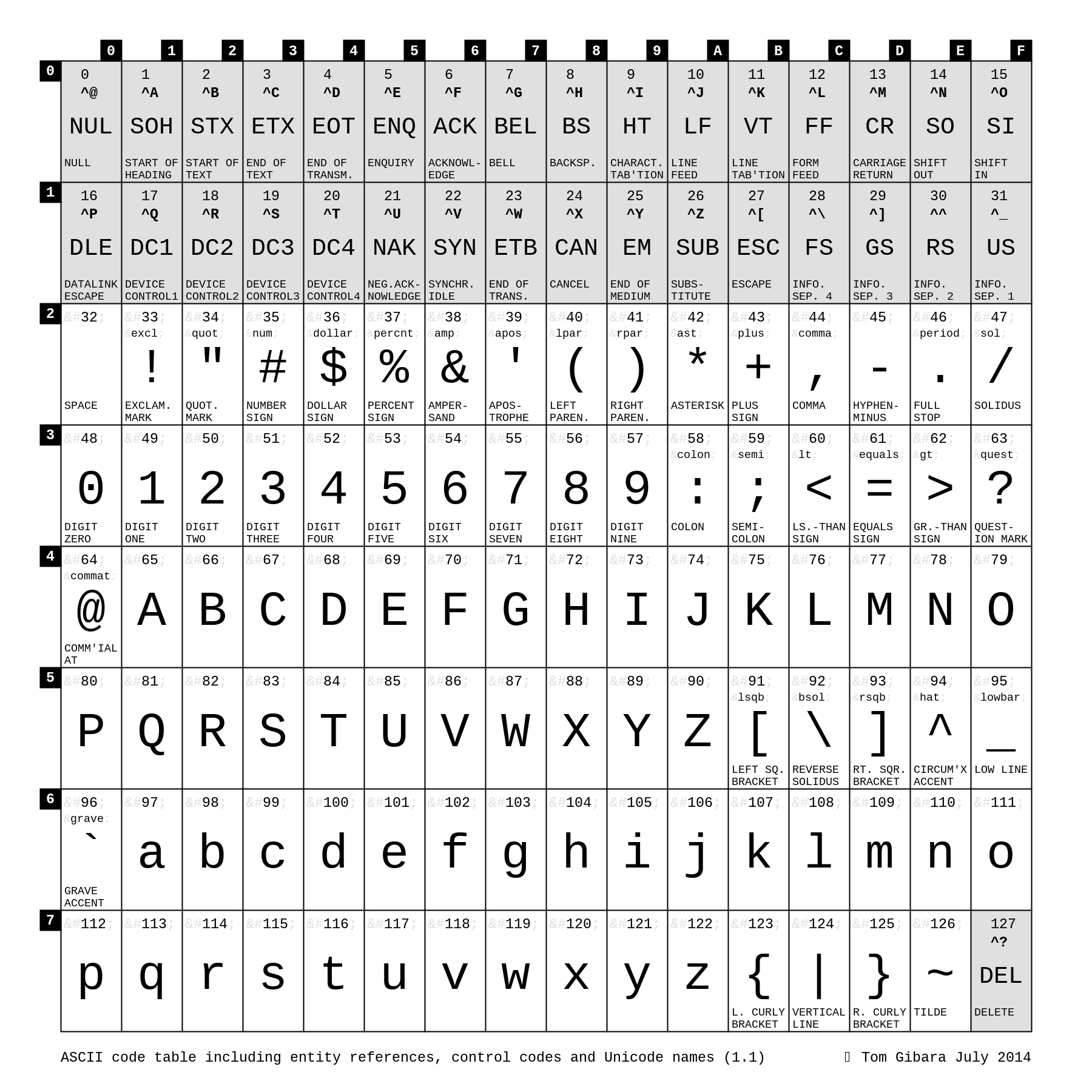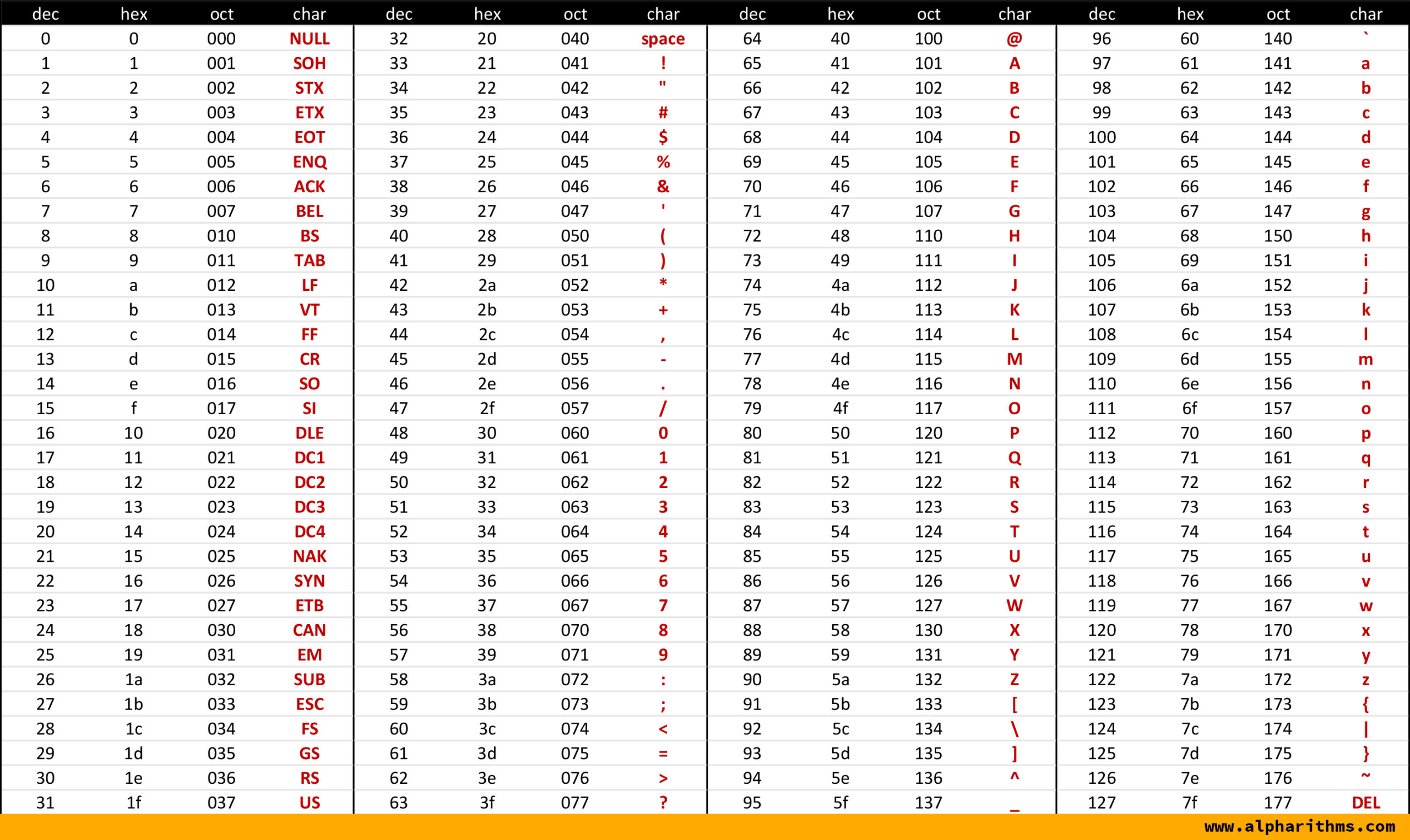ASCII (American Standard Code for Information Interchange) is a character encoding standard that represents text in computers and various electronic devices. It is a widely used character set that consists of both printable and non-printable characters.
 Coding Tips: ASCII Table
Coding Tips: ASCII Table
One of the important aspects of working with ASCII is understanding the ASCII table, which maps each character to a specific numeric value. This table provides a comprehensive reference for ASCII codes and their corresponding characters. It is a valuable tool for developers and programmers when working with character-based operations.
 ASCII Table - Google Search
ASCII Table - Google Search
A quick search on Google will reveal various resources and printable charts that provide ASCII tables. These charts can be printed and displayed for easy reference in a workspace. They often include the decimal, hexadecimal, and binary values for each character, making it easier to work with ASCII in different contexts.
 Non-English characters
Non-English characters
While ASCII is primarily known for encoding English characters, it also includes representations for various non-English characters. These characters include accented letters, special symbols, and punctuation marks used in different languages. Understanding how ASCII represents non-English characters is crucial when dealing with multilingual data or working on international projects.
 Most Commonly Asked Programs In ‘C’ & ‘C++’ Language
Most Commonly Asked Programs In ‘C’ & ‘C++’ Language
ASCII is widely used in programming languages such as C and C++. Many coding tutorials and educational resources provide examples and programs that involve ASCII manipulation. These programs help users understand various aspects of ASCII encoding, decoding, and character-based operations.
 File:ASCII-Table.svg
File:ASCII-Table.svg
Another resource for understanding ASCII is the SVG file format that represents the ASCII table visually. This graphical representation provides an intuitive and visual way to grasp the mapping of characters to numeric values. These visualizations are especially useful for beginners who are learning about ASCII for the first time.
 GitHub - tomgibara/ascii-table
GitHub - tomgibara/ascii-table
GitHub repositories such as tomgibara/ascii-table offer open-source solutions that generate ASCII tables dynamically. These tools allow developers and programmers to generate ASCII tables programmatically, which can be helpful when working with large datasets or automation tasks that involve ASCII manipulation.
 Character Encoding
Character Encoding
Character encoding is an essential concept related to ASCII and text processing. Understanding different character encoding schemes and their relationship to ASCII is crucial when dealing with international text, file conversions, or compatibility between different platforms and systems.
 ASCII Table: Printable Reference & Guide
ASCII Table: Printable Reference & Guide
Several websites provide ASCII tables as printable references and guides. These resources often include additional information and explanations for each character, making it easier to understand and utilize ASCII in various applications. Such references are particularly beneficial for professionals and students studying computer science or programming.
 Ascii Printable Code Chart Pdf
Ascii Printable Code Chart Pdf
Another convenient format for accessing an ASCII table is a printable PDF chart. These charts can be saved, downloaded, or printed for offline use, providing a handy reference when working on projects without internet access.
 ASCII() , CHAR() — String Functions
ASCII() , CHAR() — String Functions
Programming languages often provide string manipulation functions that involve ASCII, such as ASCII() and CHAR(). These functions enable users to convert characters to their corresponding ASCII values or vice versa. They are widely used in various scenarios, including data processing, sorting, and text analysis.
In conclusion, understanding the ASCII table and its applications is vital for professionals working with text-based data, programming languages, and character encoding. Utilizing ASCII tables, print-ready references, and open-source tools can significantly enhance productivity when developing software, analyzing data, or simply appreciating the intricacies of character representation in the digital world.